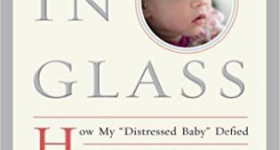A starry-eyed 10 year old travels down a dirt path, fresh new baseball cap on and electronic device in hand. Suddenly a rustle in the bushes alerts the child, bringing forth a small bird. Reaching for a red and white ball, the child throws it towards the bird, capturing the creature as part of a collection. This was the image displayed onto my television screen every weekday at 3pm back in 1998. At the enthusiastic age of 9, I was immersed into Ash’s fictional Kanto thanks to knockout pairing of the anime series and video games from Nintendo. Little did I know I would find myself back in the world of Pokémon 18 years later.
Fast forward to July 2016 and out of nowhere, screenshots of Charmanders, Rattatas, and Pidgeys flooded social media timelines like an adorable tsunami. I quickly research what the deal is, bringing me to a trailer I knew I had overlooked just months before. So… this is real life Pokémon on your phone? Intrigued enough thanks to my inner child (and persuaded enough by the fact that it’s free), I downloaded the application, caught a Squirtle in my bedroom, and went to sleep. After a spontaneous trip with friends to a Foster City park just days later just so we can walk around and play the game, I became hooked once I caught my first Growlithe -- my favorite Pokémon.
Pokémon Go is just the latest example millennial nostalgia permeating into pop culture, a phenomenon that has gained lots of traction these past several years thanks to the likes of BuzzFeed and Netflix. We’re living in a referential world that uses its modern technology to long for the time before they existed -- a world of Skip-Its, Space Jam, and cassette tapes. But as listicles and quizzes about 90’s style and toys and the ability to stream shows like Friends and The X-Files have made the past re-accessible, Pokémon Go is the first to truly give us a fully immersive experience much closer to what we dreamed would be reality when Pokémon first arrived. Instead of traversing a color palette themed continent, we walk through our own city streets, interacting with these battle-ready creatures and fellow trainers -- trainers that grew up loving this world 18 years prior.
Pokémon was a legitimate powerhouse in the late 90’s when it entered America’s -- and my -- consciousness. I had a binder filled with Pokémon cards that would eventually be traded to classmates. I sneaked in playing both Red and Blue on my Game Boy Color whenever I could, until I caught all 150 Pokémon. I sat a foot away from my TV screen watching Ash and Pikachu’s adventures, my heartstrings tugged when Bulbasaur refused to evolve. To me, it was more than just a franchise aiming for my 9-year-old heart, though. Pokémon was also a welcomed image of Asian pop culture brought straight into my own home. As a Filipino-American, I embraced every moment anything Asian or Asian American passed through American culture. Before Pokémon there was Sailor Moon and Ronin Warriors. There was Paolo Montablán as Prince Christopher in ABC’s Cinderella. There were JRPGs like the Final Fantasy series that I would play for hours on end. Every time an API extra showed up on our TV screen, my sister and I would point and cheer, “Asian!” As mindless as it was, even the slightest moment of inclusion felt like validation for my family living in this country.
It’s relieving to see more of this validation through our technology and personal interactions in today’s social landscape. From the several times I have left my house to catch ‘em all, I couldn’t help but notice the demographic of most people also playing the game around me: Asian Americans in their 20’s to early 30’s. Granted, I’ve mostly played along the San Francisco Bay Area’s peninsula, but it’s striking how a franchise targeted towards youths is garnering such an older audience. Being one of those adults frantically tossing pokeballs at Zubats, though, I was hardly surprised by this turnout. It’s nice to know I can share my validation with these people.
Now it’s 2016 and I still geek about API representation in American culture, from Vincent Rodriguez III as Josh Chan on Crazy Ex-Girlfriend to Viet Thanh Nguyen winning the Pulitzer Prize for The Sympathizer to Anderson .Paak’s acclaimed album Malibu. Throughout all of this, Pokémon Go has become the symbol of API culture that also speaks to millennial nostalgia our society craves nowadays. Without skipping a beat, we’ve gone from Game Boys to GPS tracking on our iPhones and Androids, and yet something has stayed the same: the bonds among fellow Asian-Americans all trying to catch pocket-sized creatures. We may be too old for games today, but that won’t stop us from bridging the hyphenated gap between “Asian-American” just as Pokémon did just one generation before.










Comments